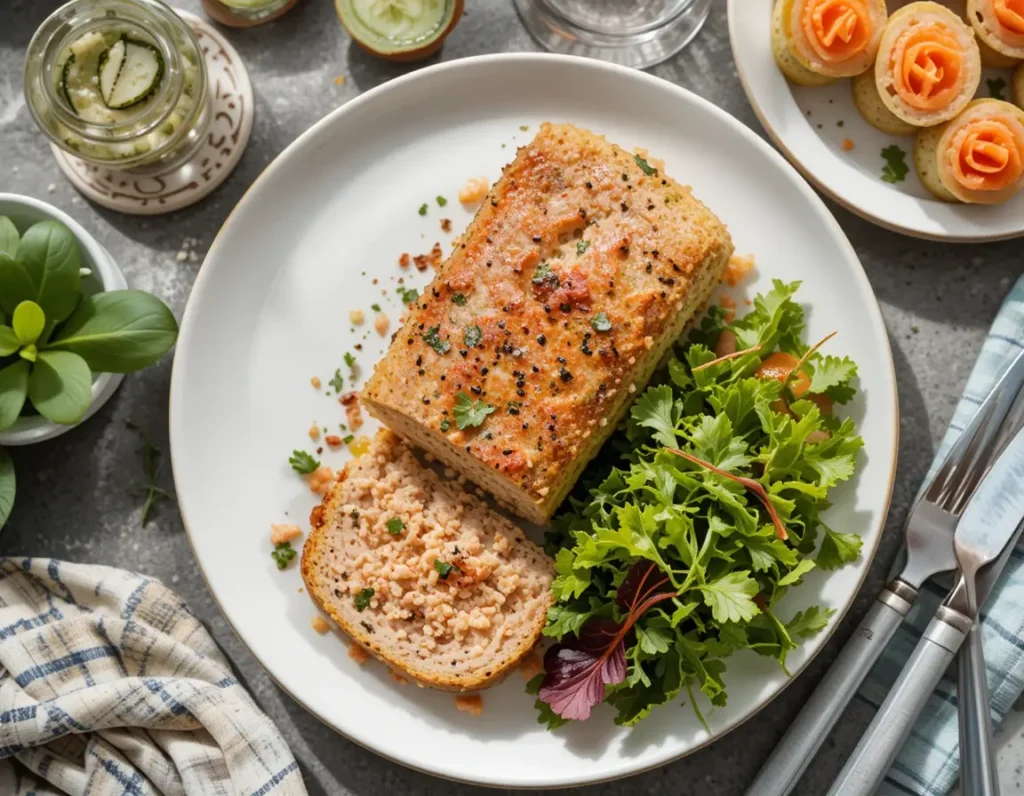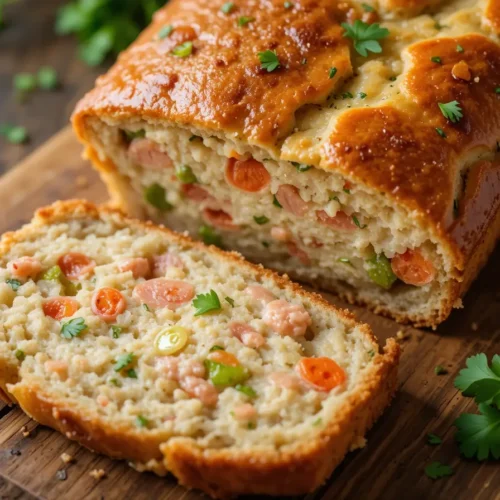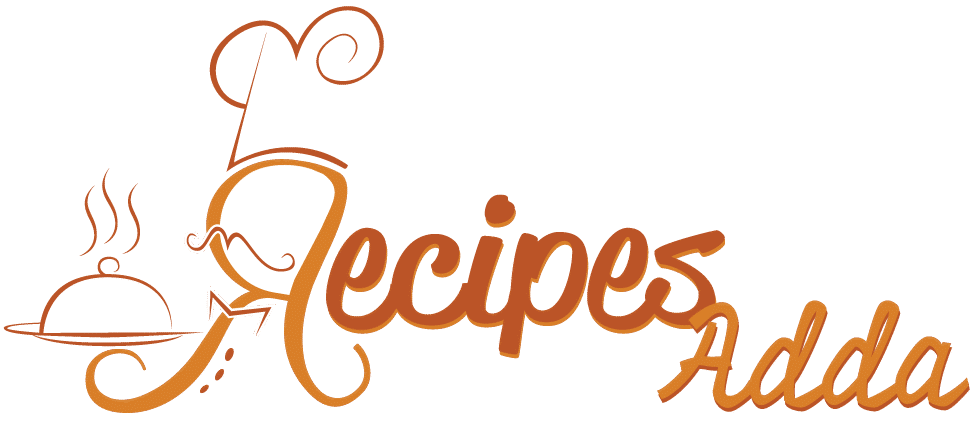The combo tuna and salmon loaf is a modern twist on classic fish loaf recipes. It combines flaky, protein-rich canned tuna and salmon into a hearty, sliceable loaf perfect for dinners, meal prep, or even lunchbox ideas.
If you’re familiar with meatloaf, this is its pescatarian counterpart — packed with omega-3 fatty acids, full of flavor, and endlessly customizable. Whether served warm with sides or cold in a sandwich, it delivers on taste, nutrition, and convenience.
Table of Contents
Why combo tuna and salmon loaf?
Here’s why this pairing is more than just practical — it’s culinary smart:
- Flavor harmony: Tuna is lean and mild, while salmon is rich and buttery.
- Textural contrast: Tuna’s firmness pairs well with salmon’s softness.
- Nutrition: Both fish are excellent sources of omega-3 fatty acids and lean protein.
- Accessibility: Canned versions are affordable and shelf-stable.
The FDA’s fish consumption guidelines encourage eating low-mercury fish like canned light tuna and salmon regularly. Additionally, NutritionData shows that salmon is also rich in vitamin B12, niacin, selenium, and vitamin D.
Classic Combo Tuna and Salmon Loaf Recipe
Ingredients
- 2 cans light tuna, drained
- 1 can pink salmon, drained (remove bones if preferred)
- 2 large eggs
- ½ cup breadcrumbs (or crushed saltines)
- ½ onion, finely chopped
- 2 ribs celery, diced
- 1 bell pepper (any color), diced
- ¼ cup chopped olives (optional)
- 1 tablespoon melted butter (or substitute olive oil)
- Salt and pepper to taste
- Optional: chopped parsley, dill, paprika, lemon zest
Instructions
- Preheat oven to 350°F (175°C).
- Mix all ingredients in a large bowl until well combined.
- Pack into a greased 9×5 loaf pan, smoothing the top.
- Bake for 70–75 minutes, until golden on top and set.
- Allow to cool for 15–20 minutes before slicing.
Pro tip: For a crispier texture, remove from the pan after 60 minutes and finish baking on a sheet pan for 10–15 more minutes.
Nutrition and Health Benefits combo tuna and salmon loaf
Nutritional Overview (per slice estimate)
- Calories: 220–250
- Protein: 22–26g
- Fat: 9–12g
- Carbohydrates: 5–10g (less if using low-carb crumbs)
Health Highlights
- Supports heart health with omega-3s
- High in protein, aiding muscle maintenance and satiety
- Low in saturated fat
- Rich in micronutrients like selenium, vitamin B12, and niacin
Make it even healthier by substituting almond flour, using egg whites, and incorporating more vegetables.
Flavor Variations and Dietary Modifications
Dietary-Friendly Adjustments
- Gluten-Free: Use crushed gluten-free crackers or potato flakes.
- Keto/Low-Carb: Almond flour instead of breadcrumbs.
- Dairy-Free: Skip cheese add-ins and use oil instead of butter.
- Paleo: Substitute mashed sweet potato or finely ground nuts.
Flavor Additions by Style
| Style | Additions |
|---|---|
| Mediterranean | Feta, olives, sun-dried tomatoes, oregano |
| Spicy Southwest | Jalapeños, cumin, lime zest, hot sauce |
| Classic Comfort | Cheddar cheese, scallions, ketchup glaze |
| Asian-Inspired | Ginger, sesame oil, soy sauce, scallions |
Meal Planning, Storage, and Reheating
Storage Tips
- Refrigerate: Up to 4–5 days in a sealed container.
- Freeze: Wrap individual slices in foil and place in a freezer-safe bag. Good for 2–3 months.
- Reheat:
- Oven: 350°F for 10–15 minutes
- Microwave: Short intervals with a moist paper towel
- Air fryer: 375°F for 6–8 minutes
For more freezing tips, see The Kitchn’s guide on casseroles.
Serving Ideas, Troubleshooting, and FAQs

Serving Ideas
Main Dish Ideas:
- With mashed potatoes and steamed vegetables
- Over quinoa with roasted broccoli
- Beside a fresh green salad
Cold Serving Options:
- Sliced in sandwiches or wraps
- As a protein topping for salad bowls
- Cut into cubes for bento boxes or appetizers
- Paired with fresh vegetable-based bites like these smoked salmon cucumber rolls for a light and elegant lunch spread
Troubleshooting: Common Mistakes to Avoid
- Too wet: Drain canned fish thoroughly and avoid excess liquid from vegetables.
- Crumbly loaf: Not enough eggs or breadcrumbs to bind.
- Dry texture: Overbaked or too little fat. Use a thermometer to stop at 160°F internal.
- Fishy flavor: Use lemon juice, herbs, and fresh ingredients to cut bitterness.
Frequently Asked Questions (FAQs)
Can I use fresh fish instead of canned?
Yes. Cook and flake fresh fish before using. Be sure it’s thoroughly cooled before mixing into the loaf.
Is this loaf good cold?
Absolutely. It makes excellent cold lunches, especially when served with sauces like tartar, tzatziki, or mustard aioli.
What’s the best way to add more fiber?
Add grated carrots, chopped spinach, or substitute half the breadcrumbs with oats.
Is combo tuna and salmon loaf suitable for kids?
Yes — especially if you skip bold flavors and add cheese or ketchup to make it familiar.
Can I prepare this in advance?
Yes. Mix everything the night before, cover the loaf pan with foil, and refrigerate. Bake the next day for fresh results.
Final Thoughts combo tuna and salmon loaf
The combo tuna and salmon loaf proves that comfort food can be healthy, economical, and incredibly flexible. Whether you’re looking for a reliable meal prep option, a unique dish for guests, or a lighter alternative to meatloaf, this recipe delivers.
It’s easy to customize, quick to prepare, and stores well. With endless variations and proven health benefits, this loaf is more than a recipe — it’s a solution for busy kitchens and thoughtful eating.
Would you like me to convert this article into a downloadable PDF, printable recipe card, or help format it for a blog post? Just let me know how you’d like to use it next.

Combo Tuna and Salmon Loaf
Ingredients
2 cans light tuna, drained (5 oz each)
1 can pink salmon, drained and deboned (6–7 oz)
2 large eggs
½ cup breadcrumbs (or crushed saltines)
1 tablespoon butter or olive oil (melted)
½ onion, finely chopped
2 celery ribs, diced
1 bell pepper (any color), chopped
¼ cup chopped olives (optional)
1 teaspoon salt
½ teaspoon black pepper
Optional: 1 teaspoon Dijon mustard, lemon zest, fresh dill
Instructions
Preheat your oven to 350°F (175°C) and lightly grease a 9×5 inch loaf pan.
In a large mixing bowl, combine the drained tuna, salmon, chopped onion, celery, bell pepper, and optional olives.
Add the breadcrumbs, eggs, melted butter or olive oil, salt, and pepper. Mix everything thoroughly until well incorporated.
For added flavor, mix in optional ingredients like Dijon mustard, lemon zest, or chopped herbs (e.g., parsley or dill).
Spoon the mixture into the prepared loaf pan. Press down firmly to remove any air pockets and ensure the loaf holds its shape.
Place in the preheated oven and bake for 70–75 minutes, or until the top is golden brown and the loaf is firm to the touch.
Remove from the oven and let the loaf rest for 15–20 minutes in the pan. This helps it set properly for clean slicing.
Slice and serve warm, or let it cool completely and refrigerate for later use. Delicious hot, room temperature, or cold.
Notes
- Make it gluten-free: Swap breadcrumbs with gluten-free alternatives like crushed rice crackers or potato flakes.
- Low-carb option: Use almond flour or ground flaxseed instead of breadcrumbs.
- Spice it up: Add diced jalapeños, chili flakes, or a dash of hot sauce for a spicy kick.
- Fresh herbs tip: Fresh dill, parsley, or chives add a pop of flavor and freshness to the loaf.
- Storage: Refrigerate leftovers for up to 4 days, or freeze individual slices for up to 3 months. Reheat in a 350°F oven for best texture.
- Serving suggestions: Pairs well with mashed potatoes, mixed greens, or served cold in sandwiches and wraps.
- Meal prep friendly: Make ahead, slice, and portion out for weekday lunches. It holds up well in lunchboxes and bento boxes.


